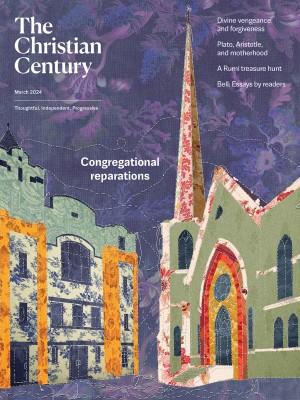School dress codes that do harm
One Kansas school board has recognized the unintended consequences and changed course.

(Source image by Delmaine Donson / E+ / Getty)
At the end of 2023, a school board in rural Kansas repented in the truest sense of the word: its members changed their minds.
After an eight-year-old student, a member of the Wyandotte Nation, cut his hair in order to avoid punishment for violating a rule against boys having long hair, the Girard Unified School District Board of Education voted unanimously to rescind the policy. In a statement, the board explained that the ability to reflect and adapt is necessary in a fast-changing future—“whether that be curriculum and technology or teaching practices and student opportunities.”
According to a 2022 federal report, 93 percent of schools in the United States have dress codes. Ostensibly, these policies help to create an environment where students can feel safe so they can focus on learning. And in some cases, this is exactly what they do. For instance, schools that prohibit clothing with hate speech slogans or graphic depictions of violence are protecting students.
Read our latest issue or browse back issues.
But often, dress codes are not protecting students, especially those with historically marginalized identities. They are harming them.
The same federal report indicates that the vast majority (90 percent) of school dress code rules address clothing typically worn by girls. But rules like those stipulating the acceptable length of a skirt—often explicitly instated to prevent boys from being distracted—condition young girls to fear their own bodies and to believe that they are responsible for boys’ behavior. They also subtly suggest that boys’ education is of singular importance.
Dress codes also impose cultural norms without regard for the diversity of a student body. Schools that ban braids, Afros, and dreadlocks, for instance, are penalizing Black identity. The student at the center of the Girard case said he was inspired to grow his hair long after learning about the spiritual significance of long hair at the Wyandotte Nation’s annual gathering. Yet his family’s initial attempts to get a religious exemption to the long-hair ban went unheeded.
Gender stereotypes are also imposed through dress codes. In a 2019 national survey, almost one in four transgender and nonbinary students said they had been prevented from wearing clothes at school that were deemed inappropriate based on gender. Meanwhile, among LGBTQ youth, negative school experiences are linked with increased rates of assault, homelessness, and incarceration.
Students who don’t comply with dress codes are often sent home, forced to miss school until they can change their clothes—if they can change their clothes. But according to a 2018 National Women’s Law Center investigation of public schools in Washington, DC, students are sometimes suspended or subjected to humiliation by school administrators.
The Girard Unified School District has not suddenly become a utopia of student freedom. Its dress codes still place restrictions on when and how girls can wear tank tops and prohibit “unnatural” hair colors, nose rings, leggings, and skirts that are “distractive.” But in rescinding even one discriminatory policy—in changing their minds—the school board members demonstrated a humility that’s worth celebrating.





